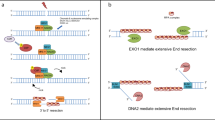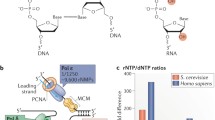Abstract
Stability of DNA largely depends on accuracy of repair mechanisms, which remove structural anomalies induced by exogenous and endogenous agents or introduced by DNA metabolism, such as replication. Most repair mechanisms include nucleolytic processing of DNA, where nucleases cleave a phosphodiester bond between a deoxyribose and a phosphate residue, thereby producing 5′-terminal phosphate and 3′-terminal hydroxyl groups. Exonucleases hydrolyse nucleotides from either the 5′ or 3′ end of DNA, while endonucleases incise internal sites of DNA. Flap endonucleases cleave DNA flap structures at or near the junction between single-stranded and double-stranded regions. DNA nucleases play a crucial role in mismatch repair, nucleotide excision repair, base excision repair and double-strand break repair. In addition, nucleolytic repair functions are required during replication to remove misincorporated nucleotides, Okazaki fragments and 3′ tails that may be formed after repair of stalled replication forks.
Similar content being viewed by others
Author information
Authors and Affiliations
Corresponding author
Additional information
Received 12 June 2003; received after revision 29 July 2003; accepted 16 September 2003
Rights and permissions
About this article
Cite this article
Marti, T.M., Fleck, O. DNA repair nucleases. CMLS, Cell. Mol. Life Sci. 61, 336–354 (2004). https://doi.org/10.1007/s00018-003-3223-4
Issue Date:
DOI: https://doi.org/10.1007/s00018-003-3223-4




